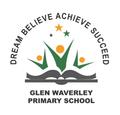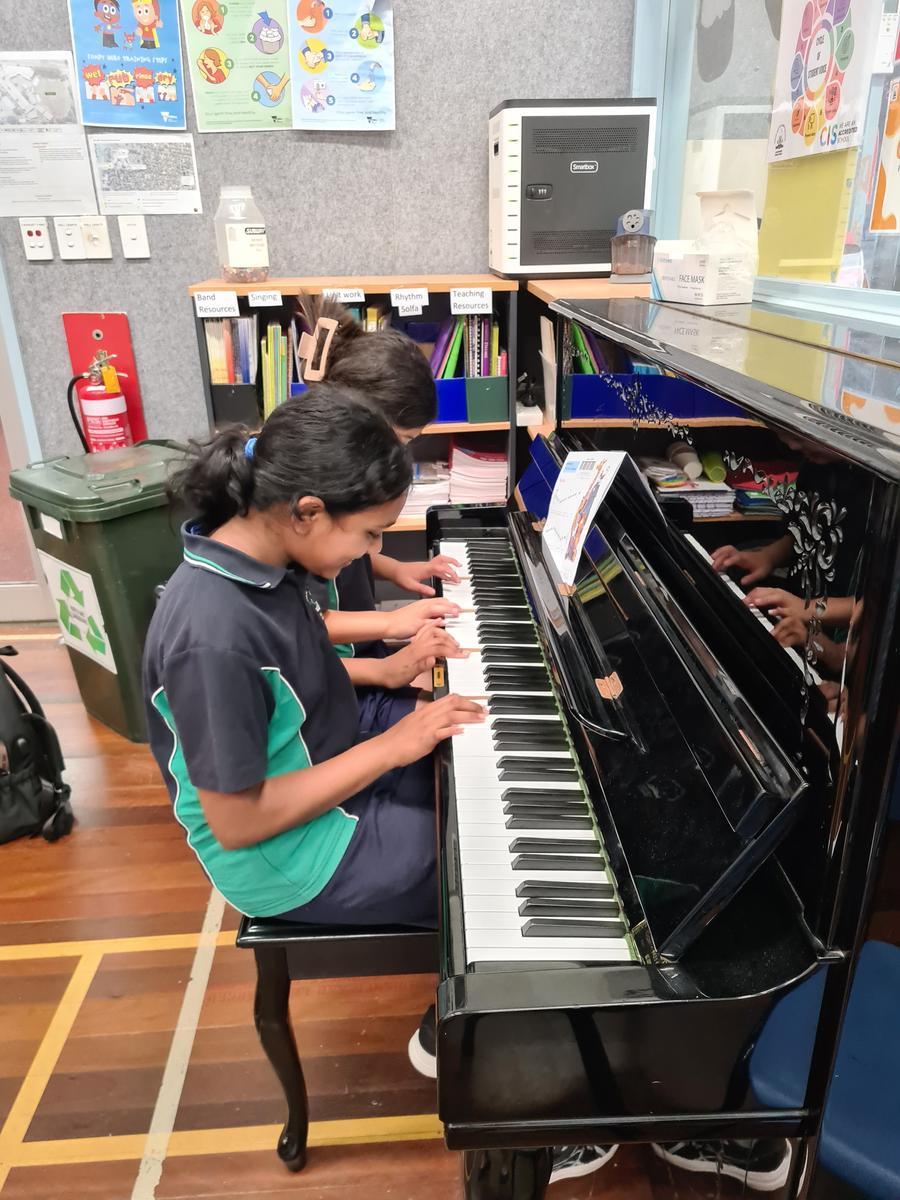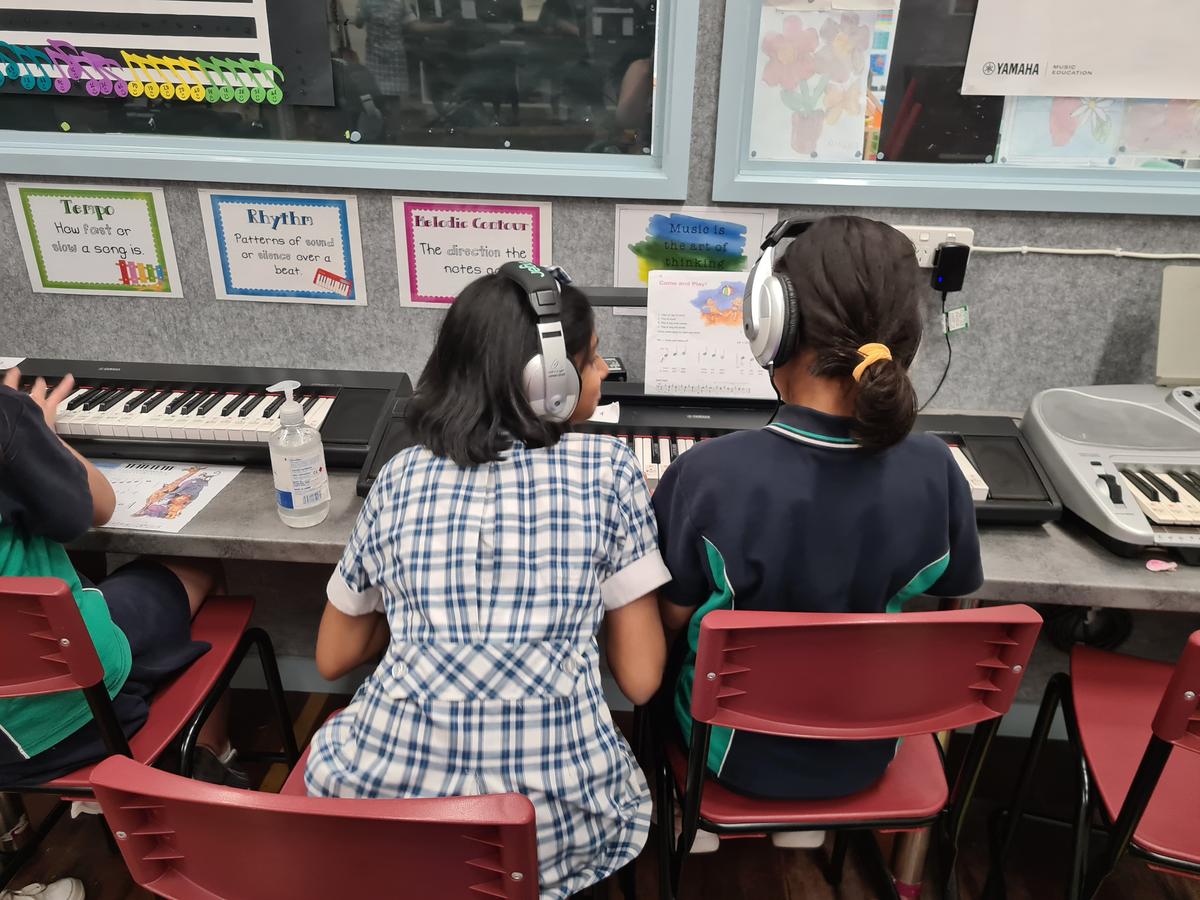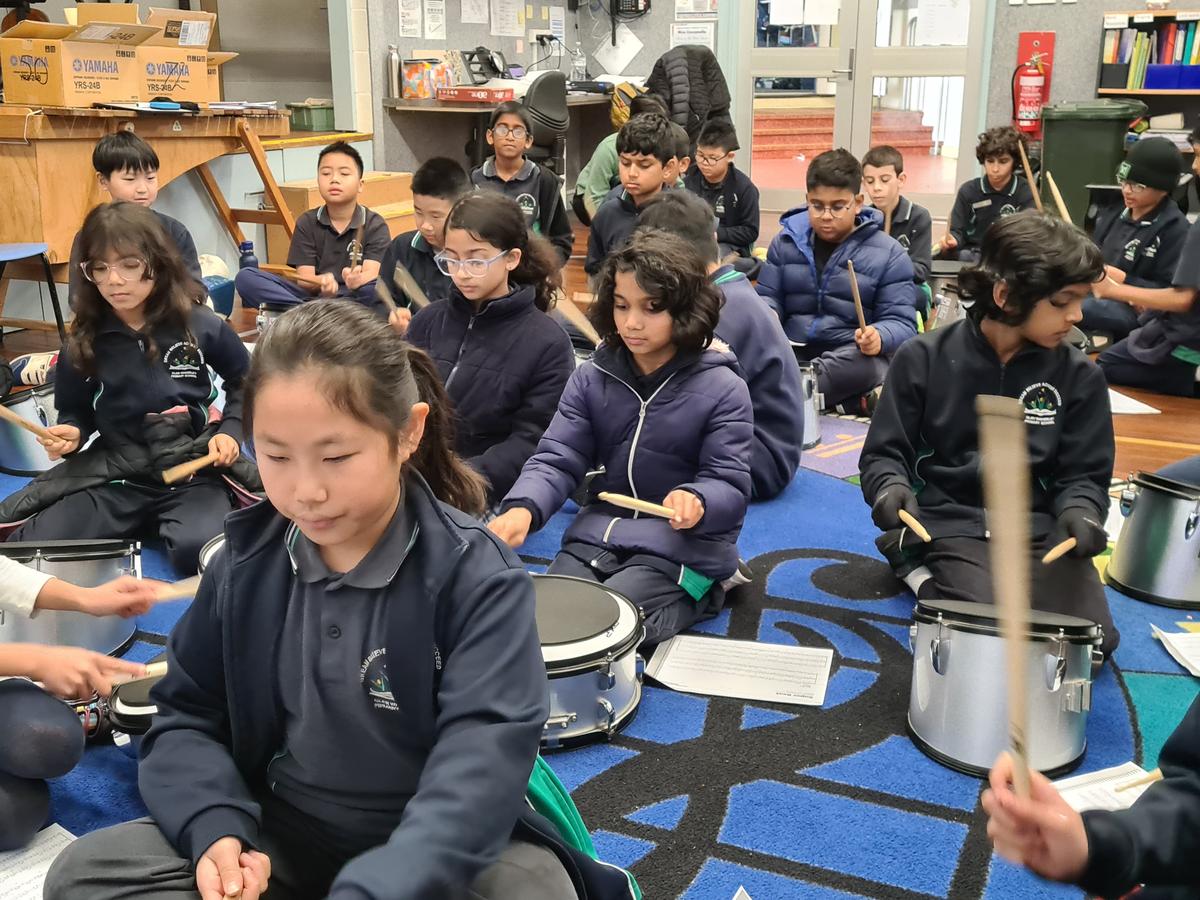Music

Welcome back to Term Three! I hope everyone had a lovely and restful two weeks holiday. This term we are focusing on developing skills such as beat, widening our range of cultural songs, rhythm and note reading.
Years 3 and 4 Mass Choir students will go on two excursions to the Melbourne Town Hall and three excursions to John Cain Arena where they will rehearse and perform in the Victorian State School Spectacular. We are extremely excited to begin practising with the 1000 other Mass Choir students and to see what an amazing show this year will be.
Year 3 and 4 Music Innovation will also take place this term with the 20 selected students extending their musical learning outside of regular music classes.
Music teacher,
Nadia Cecconello
Important Dates for Music
- Wednesday 24th July; Mass Choir Melbourne Town Hall Rehearsal number 1
- Wednesday 28th August; Mass Choir Melbourne Town Hall Rehearsal number 2
- Thursday 12th September; VSSS John Cain Arena Tech Rehearsal
- Friday 13th September; VSSS John Cain Arena Dress Rehearsal
- Saturday 14th September; VSSS John Cain Arena Performances
Prep
In Term Three, Prep students will commence a unit on the Glockenspiel. They will focus on using correct technique as well as playing simple songs fluently. Students will continue to build on their prior knowledge of beat to ensure that they play each song with a steady beat. They will also continue to develop their counting skills by working this out before transferring their learning to play the songs on the Glockenspiel. When learning simple songs, Prep students will ensure that their crotchets (ta’s) and quavers (ti-ti’s) sound different to each other. This will focus on developing their rhythm and counting skills.
Curriculum Links:
- Rehearse and perform songs and short instrumental pieces which they have learnt and composed (VCAMUP0One9)
Key Vocabulary:
Glockenspiel, Counting, Crotchets (ta’s) and Quavers (ti-ti’s)
Year 1
Throughout Term Three, Year One students will be beginning a unit on Indigenous songs. They will focus on learning and analysing many different songs transferring them to instruments such as the xylophone. Students will also be introduced to more complex rhythms that include crotchets (ta’s), quavers (ti-ti’s) and crotchet rests (za’s). They will explore these rhythms through the Indigenous songs they will learn on xylophone. Students will also use their singing voices to learn the words and rhythms to the Indigenous songs transferring this once again to the xylophone.
Curriculum Links:
- Rehearse and perform songs and instrumental music they have learnt and composed to communicate ideas to an audience (VCAMUP023)
- Sing and play instruments to improvise, compose and practise a repertoire of chants, songs and rhymes, including those used by cultural groups in the local community (VCAMUM022)
Key Vocabulary:
Crotchet rest, Xylophone, Rhythm
Year 2
In Term Three, Year 2 students will undertake a unit on piano, focusing on learning about time signatures. Year 2 students will be learning how to count in multiple simple time signatures as well as learning simple songs on Piano in those time signatures. They will focus on a different time signature each lesson learning three different time signatures: 2/4, 3/4 and 4/4 time. Year 2 students will also continue to develop their beat skills by ensuring they keep a steady beat when playing songs on the Piano. They will focus on playing each song fluently with no gaps and counting each beat transferring their knowledge of time signatures to the Piano.
Curriculum Links:
- Rehearse and perform songs and instrumental music they have learnt and composed to communicate ideas to an audience (VCAMUP023)
- Sing and play instruments to improvise, compose and practise a repertoire of chants, songs and rhymes, including those used by cultural groups in the local community (VCAMUM022)
Key Vocabulary:
Time Signature, Beat, Counting
Year 3
Throughout Term Three, Year 3 students will undertake a unit on the Piano. They will learn the correct technique to use when playing the Piano and be introduced to music terminology that is commonly found on sheet music. Students will be introduced to and learn many different songs on the Piano that use various notes and begin in different sections of the Piano. Throughout the term students will be consolidating their knowledge on time signatures and the various notes they have learnt such as semiquavers. Students will transfer their learning and prior knowledge to play simple songs on the Piano using correct technique and rhythm.
Curriculum Links:
- Use voice and instruments to sing, play and arrange music from different cultures, times and locations, and improvise and compose music in different forms (VCAMUM026)
- Use imagination and creativity to explore pitch, rhythm/time and form, dynamics and tempo using voice, movement and instruments (VCAMUE025)
Key Vocabulary:
Semiquavers, Technique, Sheet Music, Time Signatures
Year 4
In Term Three, Year 4 students will commence a unit on drums. Students will learn about the different parts of the drums (top, rim, side and sticks) and the technique we use to play them. They will also learn new and more complex rhythms through the drums. As the term progresses the students will learn two parts of a song (A and B). By the end of the term students will be playing both parts A and B in an ensemble as a whole class with half the class on part A and half on part B. They will transfer their knowledge of beat and their listening skills to ensure they stay together with the class. Students will focus on using correct technique whilst keeping a steady beat.
Curriculum Links:
- Rehearse and perform songs and instrumental music they have learnt and composed, shaping elements of music to communicate ideas to an audience (VCAMUP027)
Key Vocabulary:
Technique, Rhythms, Beat, Listening, Ensemble
Year 5
Throughout Term Three, Year 5 students will undertake a unit on the Recorder. Students will learn the technique used to create the most pleasing sound from their Recorder and multiple notes. They will then use the notes they have learnt to play simple songs. When learning these songs students will transfer their knowledge of beat to play the songs fluently. As the term progresses students will learn more complex songs but will also begin to play in small and large (whole class) ensembles. Throughout the term, Year 5 students will not only focus on playing the correct notes and rhythm but also their counting to ensure they can stay together when playing in an ensemble.
Curriculum Links:
- Explore ways of combining the elements of music using listening skills, voice and a range of instruments, objects and electronically generated sounds to create effects (VCAMUE029)
- Develop and practise technical skills and use of expressive elements of music in singing, playing instruments, improvising, arranging and composing (VCAMUM030)
- Rehearse and perform songs and music they have learnt, including their own compositions, combining aspects of the elements of music and using performance skills, to communicate ideas and intentions to an audience (VCAMUP031)
Key Vocabulary:
Rhythm, Ensemble, Fluently
Year 6
In Term Three, Year 6 students will commence a unit on drumming. Students will be learning a drum song called ‘Chupacabra Chomp’ which is comprised of two different parts. They will first look at the various parts of the drum (top, rim, side and sticks) before beginning to learn part A. Students will move on to learning part B once they are confident with part A. They will transfer their learning of complex rhythms and ensemble playing skills to the drums. By the end of the term Students will put both parts A and B together to play as one large ensemble. They will ensure they are listening, counting the beats and keeping a steady beat. Later in the term students will also begin the process of choosing their graduation song.
Curriculum Links:
- Explore ways of combining the elements of music using listening skills, voice and a range of instruments, objects and electronically generated sounds to create effects (VCAMUE029)
- Develop and practise technical skills and use of expressive elements of music in singing, playing instruments, improvising, arranging and composing (VCAMUM030)
Key Vocabulary:
Ensemble, Rhythms, Beats, Listening
How can you support your child’s Music learning at home?
- Read a book on your favourite music artist!
- Watch a documentary about a famous musician such as Mozart.
- Make your own home-made drum from buckets, pots and pans to practise your rhythm.



